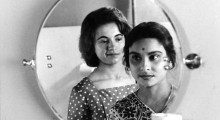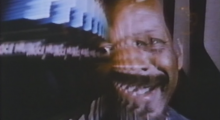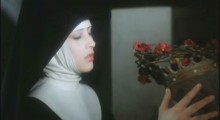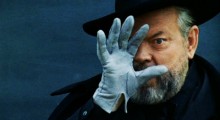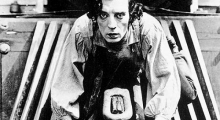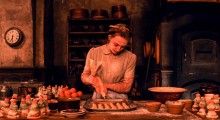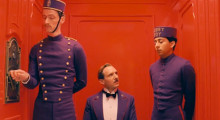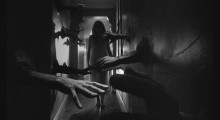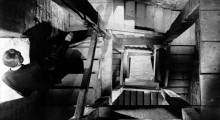Video Essay
-
Watch: Eye Contact in Satyajit Ray’s The Big City

In one of my favorite recent video essays, “Rohmer’s Guessing Games,” Kevin B. Lee explores the POV shots and blocking in A Summer’s Tale as a means of muddling character motivations. The above inquiry, from Joel Bocko, into eye contact throughout Satyajit Ray’s The Big City as a mode of character development, makes for a rather nice companion piece, and also a nice reminder of how storytelling is consistent in the finer details.
by Filmmaker Staff on Jul 8, 2015 -
Watch: Ornette Coleman: Free Spaces

Shirley Clarke’s filmography is witnessing a much needed resuscitation thanks to the efforts of Milestone Films, and one specific title, Ornette: Made in America, is of particular pertinence given the untimely passing of its subject, Ornette Coleman. Kevin B. Lee has taken Clarke’s ever unusual documentary portrait — filmed over the course of 20 years — and divvied its often psychedelic tinged frames over a widescreen to analyze the visual patterns and rhythms Clarke achieves with her offbeat editing style. Watch above.
by Sarah Salovaara on Jul 1, 2015 -
Watch: Objects and Objectification in the Films of Walerian Borowcyzk

Currently ongoing at the Film Society of Lincoln Center is the Walerian Borowcyzk series, Obscure Pleasures, and Film Comment Digital Editor Violet Lucca fashioned a nice film essay to supplement the occasion. The above video considers how Borowcyzk’s animation background influenced his treatment of objects, which he often imbues with lifelike or plot-reflecting properties. In the opening film of the series, The Strange Case of Dr. Jekyll and Miss Osbourne, a phonograph is partially responsible for the third act climax. Lucca also considers the filmmaker’s disregard for shot-reverse-shot construction and his dedication to portraying female sexuality in a series of fairly NSFW clips.
by Sarah Salovaara on Apr 7, 2015 -
Watch: Tony Zhou on F For Fake and How to Structure a Film

“‘Therefore’ and ‘but;’ ‘meanwhile’ and ‘back at the ranch.’” Those are two storytelling axioms to keep in mind, suggests Tony Zhou, when structuring both a film and a video essay. Drawing on Orson Welles’ F For Fake, as well as the words of Alfred Hitchcock and Trey Parker, Zhou demonstrates how the juggling of parallel ideas and story lines are essential to any convincing film or argument.
by Sarah Salovaara on Mar 31, 2015 -
Watch: Why Gordon Willis’ Lighting in Interiors is Another Character Element

In conjunction with the Museum of Moving Image’s first ever cinematographer-centric retrospective, Reverse Shot has produced a small tribute to Gordon Willis’ work on Woody Allen’s Interiors. Staging their own recreations of the film’s many portraits, editors Michael Koresky and Jeff Reichert examine how Willis’ lighting contributes to the emotional interiority of Diane Keaton’s character, Renata. By casting her in shadows for the majority of the film, Willis reinforces her isolation. It’s an important consideration of how cinematography can not only set the external tone of a film, but also play a necessary role in the characterization of its inhabitants.
by Sarah Salovaara on Feb 20, 2015 -
Watch: Buster Keaton’s Symmetrical Sense of Humor

kogonada first caught our eye two years back with his exploration of symmetry in the works of Stanley Kubrick, followed by Wes Anderson a year later. But before both auteurs were associated with a centered, exacting aesthetic, Buster Keaton applied a looser construct of symmetry to his brand of physical comedy. The above video from Vince di Meglio looks at how the central framing of nearly 30 of Keaton’s films allows for head-to-toe humor in relation to both objects and space.
by Sarah Salovaara on Feb 19, 2015 -
Watch: Melancholy and Loss in The Grand Budapest Hotel

Wes Anderson’s detractors often delight in taking umbrage with the filmmaker’s “twee” aesthetic, claiming that his formal specificity undermines the emotion his films ought to inspire. This video essay by Matt Zoller Seitz, one in a series adapted from his book The Wes Anderson Collection, dismantles that claim through the lens of The Grand Budapest Hotel, and its myriad melancholic layers of loss and thwarted re-invention. With respect to Zero, Seitz notes that “The most important parts of a story are the parts people omit, the abysses they sidestep,” and how Agatha becomes a vague, distant cypher — both narratively and through Yeoman’s […]
by Sarah Salovaara on Feb 17, 2015 -
Watch: Who Deserves to Win the Oscar for Best Director?

Kevin B. Lee has been churning out a series of visual supplements to oscar punditry over at Fandor that weigh politics against actual evidence, even if it is still subjective. His latest video, Who Should Win the Oscar for Best Director?, considers which of the filmmakers behind The Imitation Game, Foxcatcher, The Grand Budapest Hotel, Boyhood and Birdman, displays the most sensitive, contextually sound technique. He’s spot on in his assessments of three of the five, but I’d argue that The Grand Budapest Hotel finds a renewed cause for Anderson’s seemingly premeditated aesthetic, while Iñárritu ultimately limits himself to the very air of spectacle he […]
by Sarah Salovaara on Feb 4, 2015 -
Watch: What if Béla Tarr Made Polanski’s Repulsion?

“Inside every narrative film is a non-narrative film struggling to get out.” Here is a wonderfully distinctive video essay from critics Adrian Martin and Christina Álvarez López that reimagines Roman Polanski’s Repulsion as the work of Béla Tarr. Zeroing in on “the dank spaces and the dead moments, the images of food-as-object, the cycle of everyday activities, the endless, implacable passages of walking,” and other Tarr associated imagery, Martin and López explore filmmaking as elementary particles, tonally rearrangeable in line with a director’s vision and story. In a supplementary write-up at MUBI, the two cite Jonathan Rosenbaum’s review of The Tenant, wherein […]
by Sarah Salovaara on Jan 12, 2015 -
Watch: Alfred Hitchcock’s Visual Gallery

Here is a rather comprehensive look at the visual motifs apparent throughout the formative years of Alfred Hitchcock’s illustrious career, from 1934’s The Man Who Knew Too Much to 1976’s Family Plot. Whether staging action around a staircase or riffing on the illusion of free fall, Hitchcock revisited and realigned techniques from one decade to the next. This compilation from Steven Benedict breaks down the visual grammar of 42 of the filmmaker’s features, stitching together his preferred still images with his swooping camera techniques, including a personal favorite: Gregory Peck’s POV as he drinks a glass of milk in Spellbound.
by Sarah Salovaara on Jan 5, 2015
